Why Kids and Parents are Hugging Trees Now
Recently revealed to be a form of stress relief, this is how hugging trees has become a new trend to soothing families’ distress.
“Tree hugger” used to be a slur in the past for environmental activists but not anymore! Recent studies have revealed that tree hugging offers some amazing mental health benefits, mostly for stress relief. Especially for families who have long lived in the metro, hugging a tree creates a sense of novelty and calmness which is a lot better than touching a building’s hot concrete. It’s a soothing sensory experience for many kids and parents and Modern Parenting is here to break down the psychology behind why people these days are literally hugging trees:
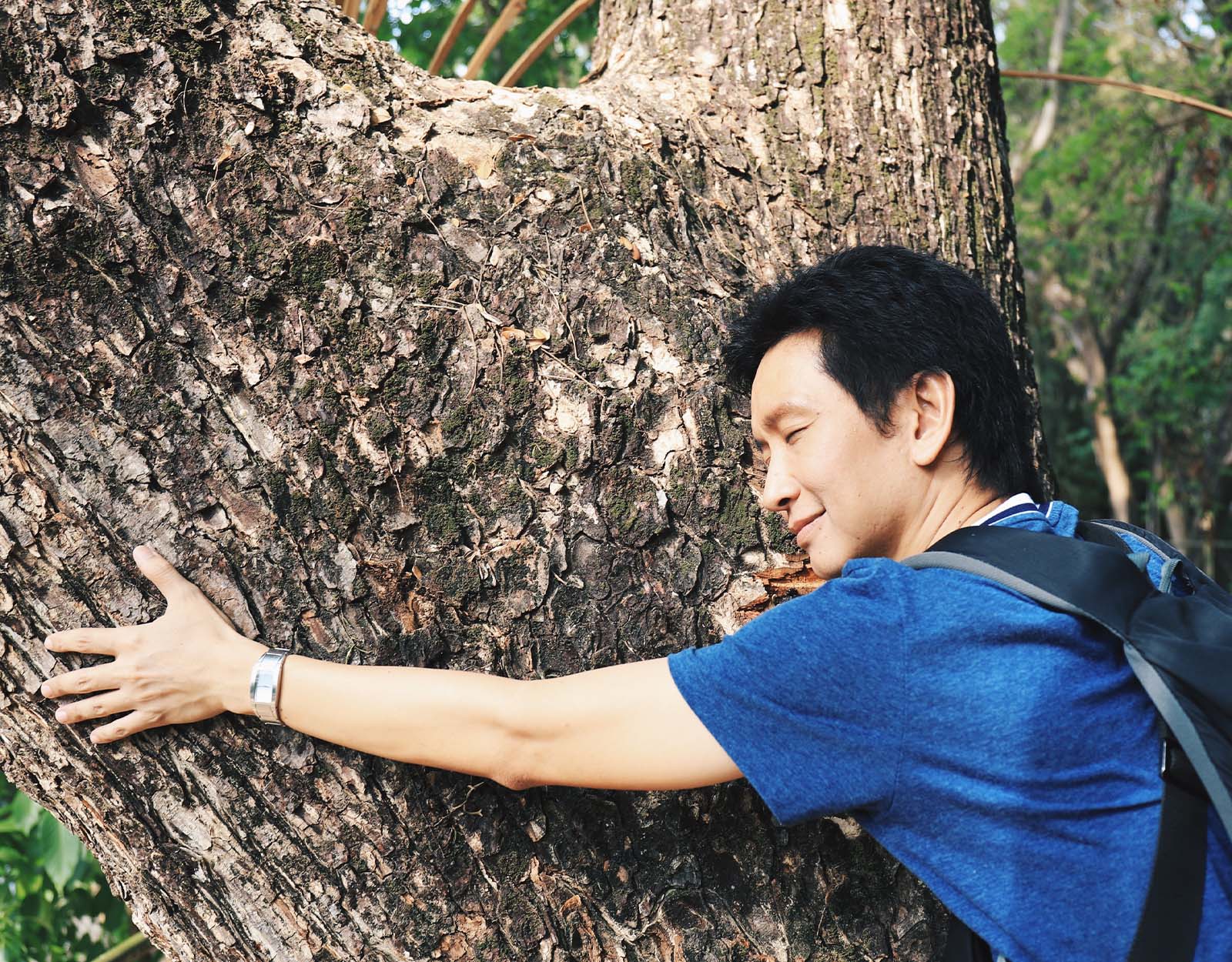
Is it the tree or the hugging that reduces the stress?
This new trend of relief marries two stress-relieving elements: hugging and the trees themselves.
Science has always pointed out to us the stand-alone heartwarming effects of hugs (Walker and US Immigration, 2019). It releases endorphins which we know as the “happy hormone,” halting certain infections and the progress of diseases, including some portions for aspects of cancer when done on a daily basis (Adriansyah, Sofia and Prastika, 2018; van Raalte and Floyd, 2021). On the biological side, hugging releases a hormone known as “oxytocin” which many call the “cuddle hormone” (Simonyi-Gindele et. al, 2018). And did you know? Oxytocin is also the same hormone that triggers contractions or labor when we give birth which explains that joy-filled “high” when we meet our bundle of joy for the first time!
But trees also offer almost the same levels of soothing and calmness that some have already modeled a form of therapy around the idea. Also known as Tree-Assisted Therapy (Gathright, Yamada, and Morita, 2008), therapists create all sorts of activities that mimic a tree’s behavior to help people settle down and de-escalate their feelings of anxiety and depression. They also added tree climbing, which promotes skin-to-skin contact to further trigger the release of those happy hormones. Similar to how we hug our kids!
Another term for the trend: Forest Bathing
Tree hugging is more specific to an individual but the calming and stress-relieving effects are almost instant when families engage in forest bathing. Journeying and hiking through the various forests not only insulates the loud honking of horns, and the awful smell of smog and pollution but also offers a soothing earthy scent from the leaves and soil and calming “white noise” in the form of the crushing of dried leaves under our feet and the various chirps and sounds by the animals in the area (Li, 2010; Farkic, Isailovic, and Taylor, 2021).
It’s a practice that’s most common in Japan and we probably enjoy this too as tourists when we travel there. Also known as Shinrin-yoku, the trend creates an “awakening” experience that helps people become more connected with their emotions as they associate the falling of leaves and cherry blossom petals with how their emotions should behave (Tsunetsugu, Park, and Miyazaki, 2010; Wen, Yan, Pan, Gu, and Liu, 2019).
Where can we go forest bathing in the Philippines?
Unfortunately, technology and economic demands have made it impossible to properly forest bath within the metro unless we live in subdivisions that are strict about maintaining their greenery. But there are still various places in the Philippines that offer this amazing form of stress relief.
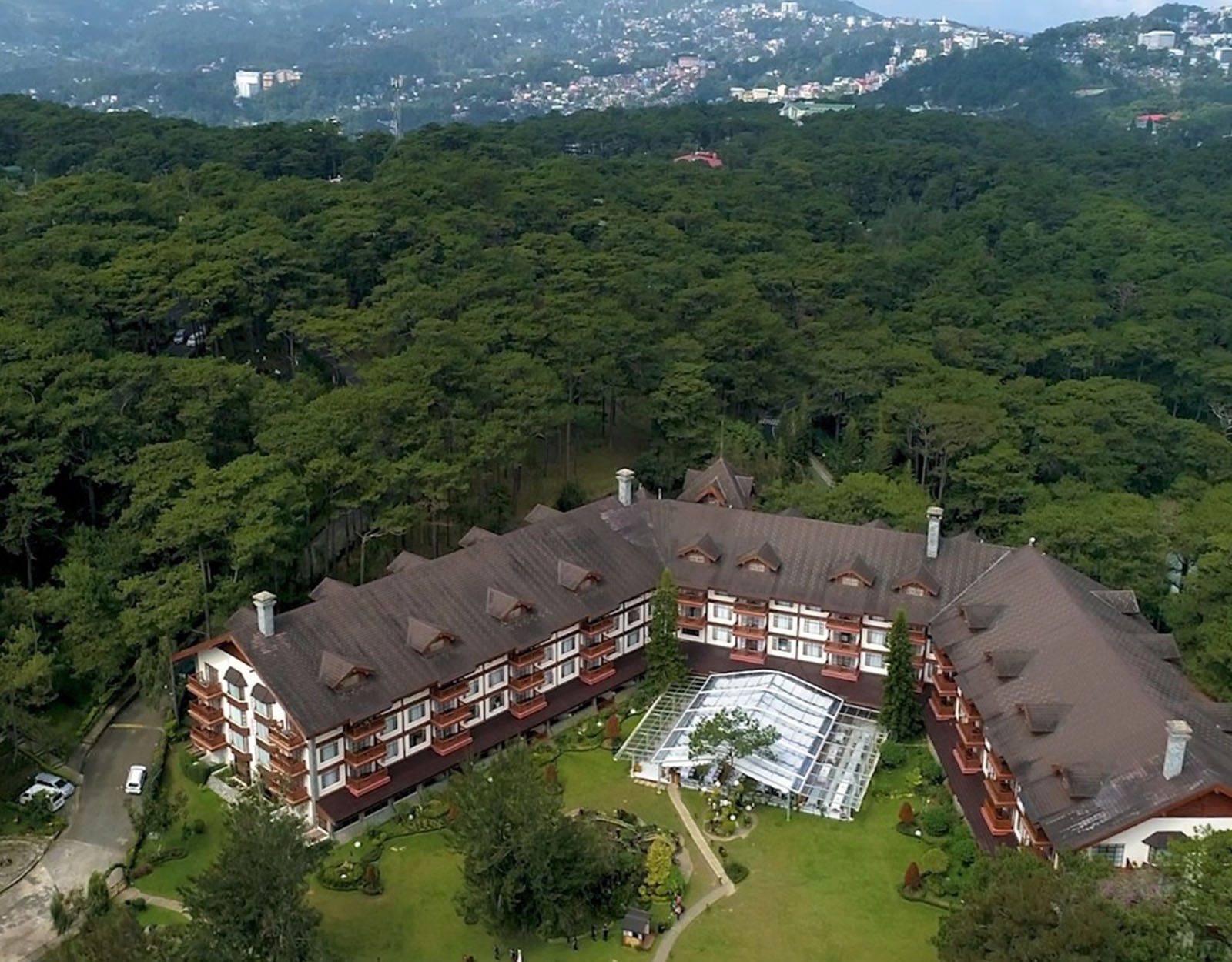
1. Camp John Hay, Baguio City, Benguet
Baguio has always been home to pine trees with Camp John Hay still housing many of them within its area. Behind the golf course, there is a hiking trail that links up Camp John Hay to Minesview Park which also offers another miniature forest bathing area: the Good Shepherd Monastery where we can buy our favorite Ube Jam or Strawberry Jam as a souvenir before leaving.
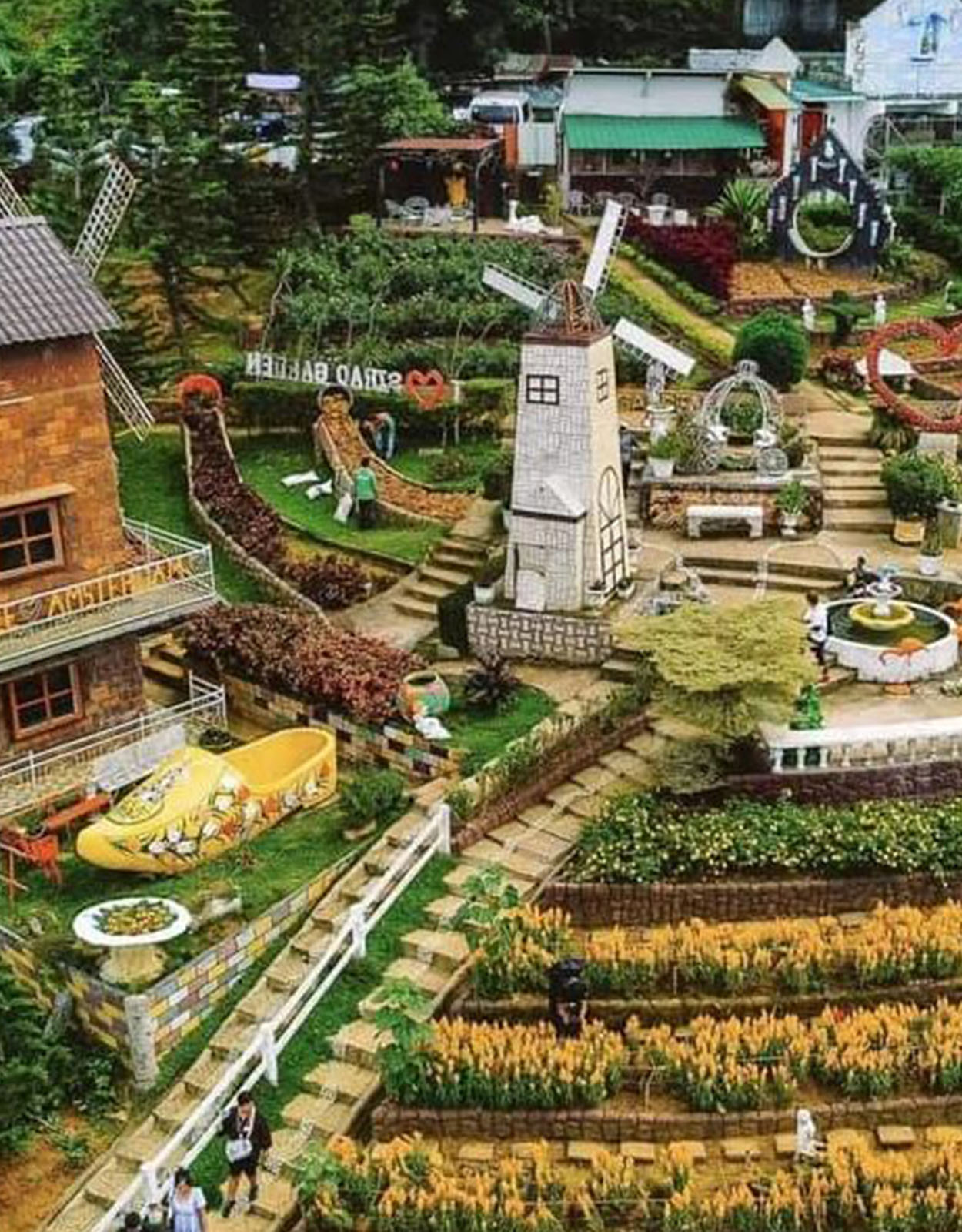
2. Original Sirao Flower Garden, Sirao, Cebu City
Although not a forest, we’re sure that we’d love to flower bathe, too! The Original Sirao Flower Garden in Sirao, Cebu City also earns its nickname as the “Little Amsterdam” because it shares some similarities with Netherlands’s Keukenhof Flower Garden. It houses various flora that are not usually found in the metro’s gardens. The place has an entrance fee of PHP100.00 and is open from 8 AM to 5 PM.
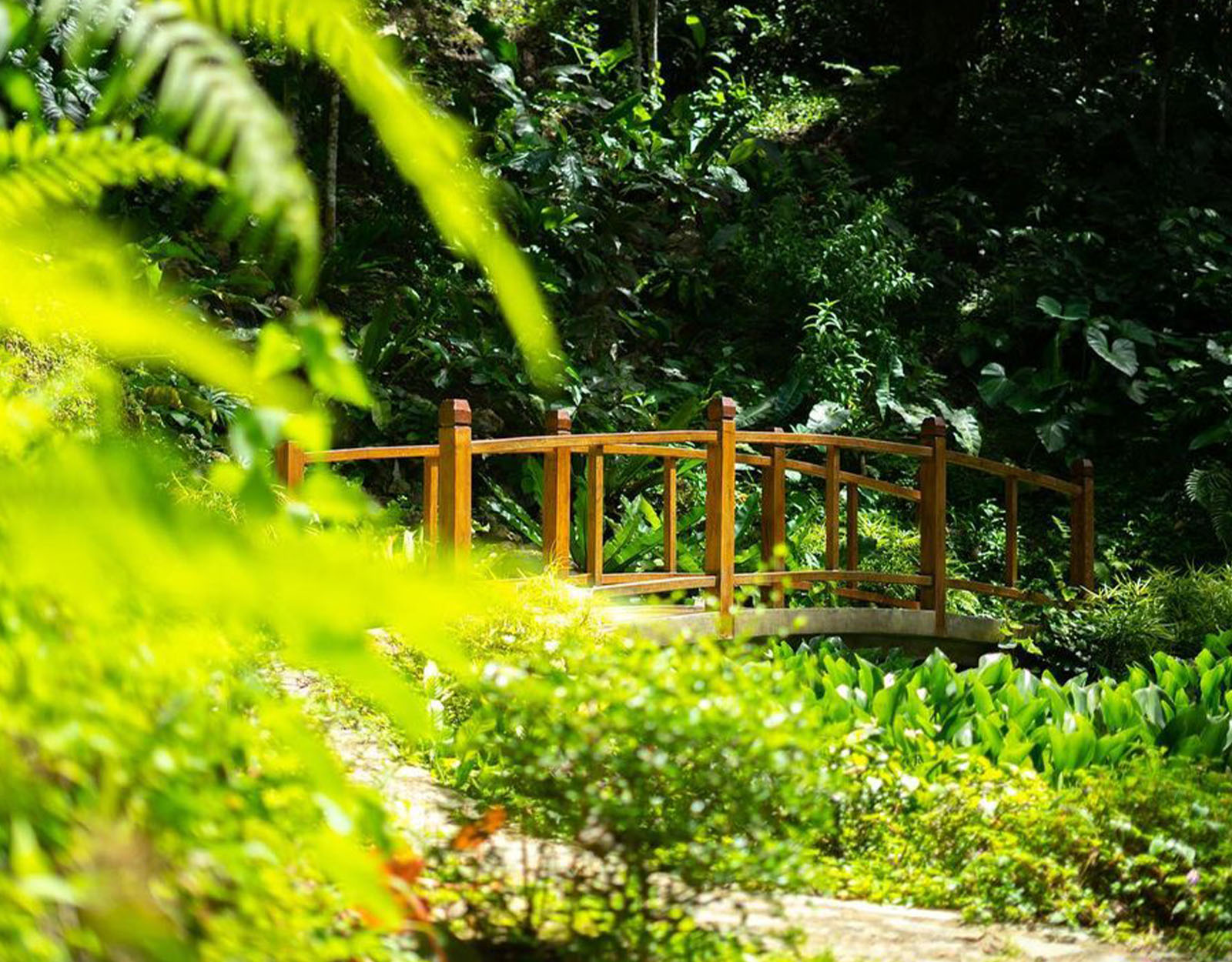
3. Terrazas de Flores, Malubog, Cebu City
Once one goes to Terrazas de Flores, standards for what a floral café should look like will skyrocket. Terrazas de Flores not only is home to 127 variants of trees and flowers but also has a café that offers a relaxing and soothing view of the garden. And even though it’s raining, the place still has its vibrant flowers to provide a treat for the eyes.
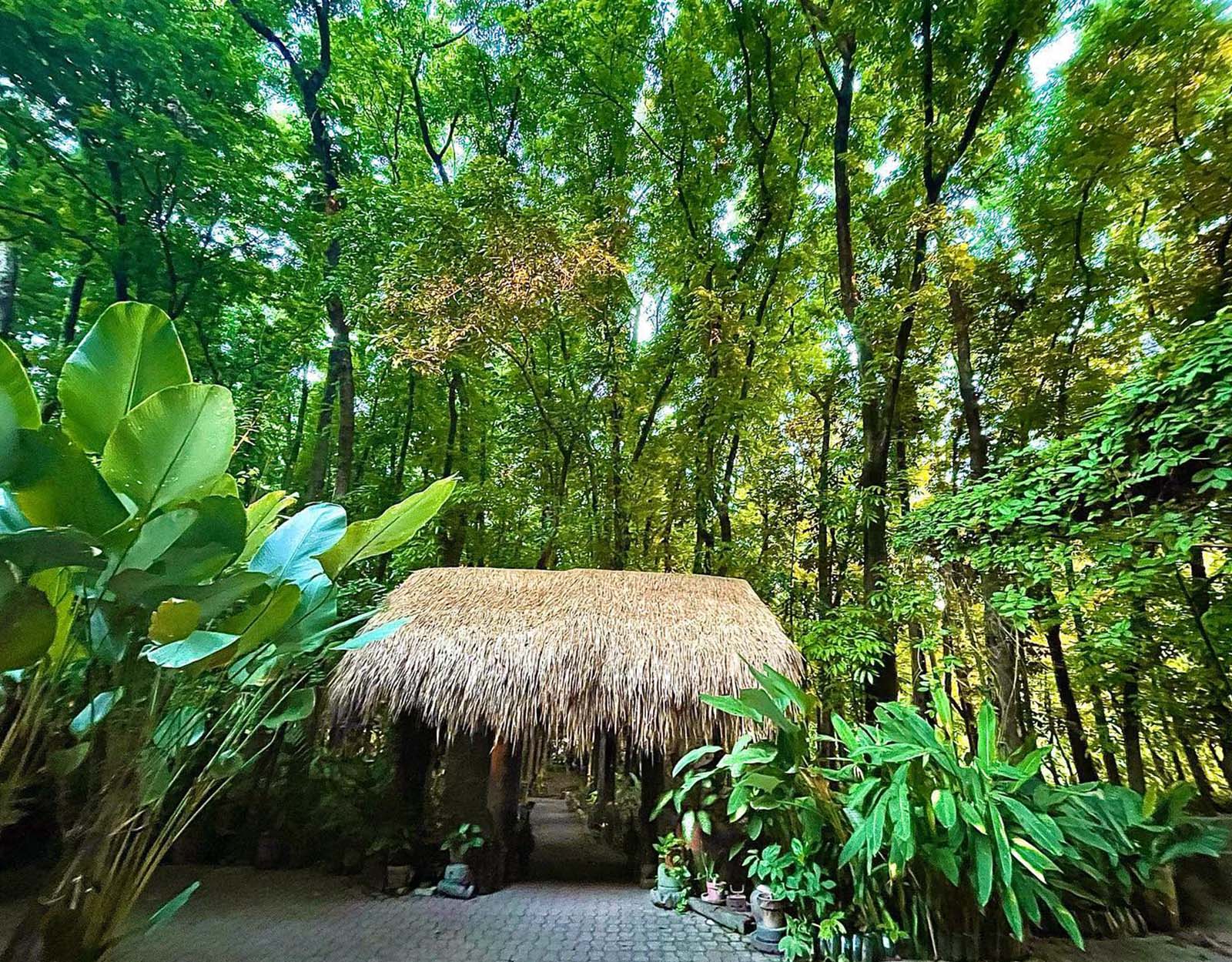
4. Balé Pampanga, Pampanga
A gem hidden among the lush greeneries of Pampanga, Balé Pampanga is not an easy find. But it’s well worth reserving as the place welcomes you the same way Mother Earth welcomes her errant children home after a long day of horsing around. Dine among the soothing trees while having tummy-soothing home-cooked Kapampangan meals to celebrate the culture that pays tribute to the natural beauty of the Philippines.
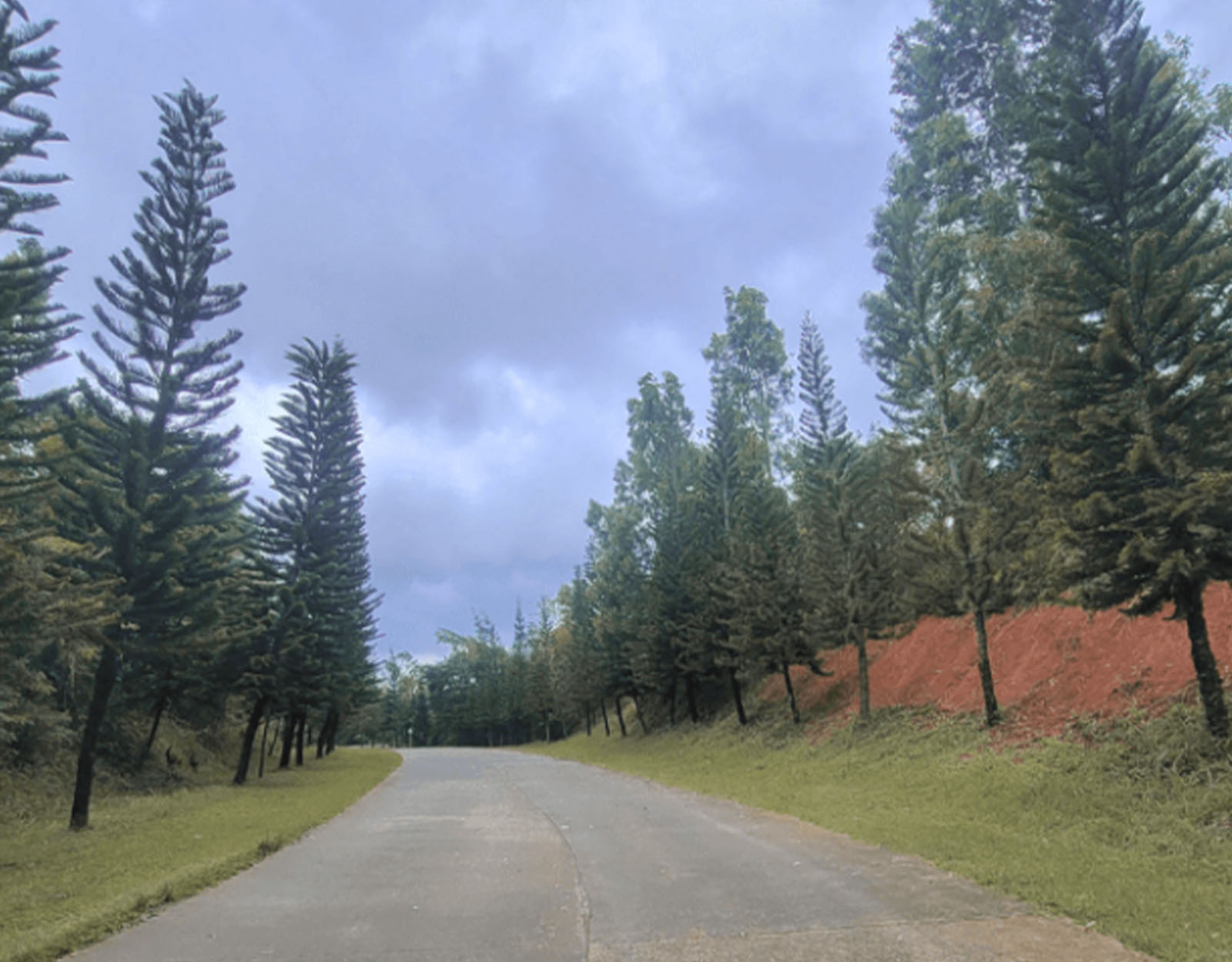
5. Sapinit Road, Antipolo
Perhaps a little closer to home, Sapinit Road bears some semblance to Baguio with its various trees lining the way up to Antipolo Highlands. Since it’s a public space, parking is free and some families from Antipolo even enjoy a picnic or two in the area. Just don’t forget to CLAYGO (Clean As You Go) to thank the trees for allowing you to dine in their home.
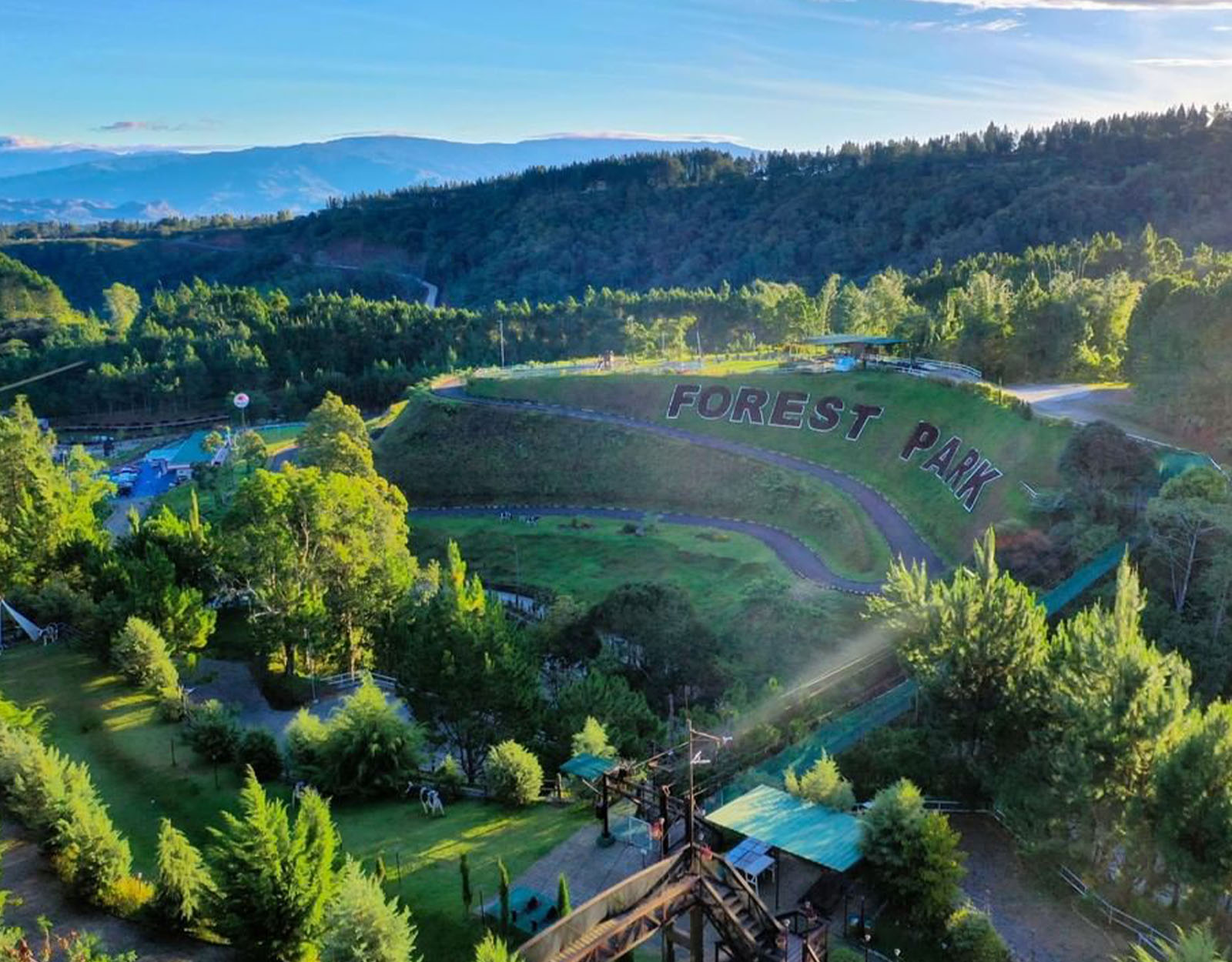
6. Dahilayan Forest, Bukidnon
Down south in Bukidnon, Dahilayan Forest truly offers the forest bathing and tree-hugging experience with its cabin resort surrounded by many trees. They offer both bunk-type or hotel-like stays for families who wish to see the lands beyond the typical tourist provinces. But the best part about the place is that the management also cordoned off areas like ponds, lagoons, animal sanctuaries, and forest trails for families to safely enjoy.
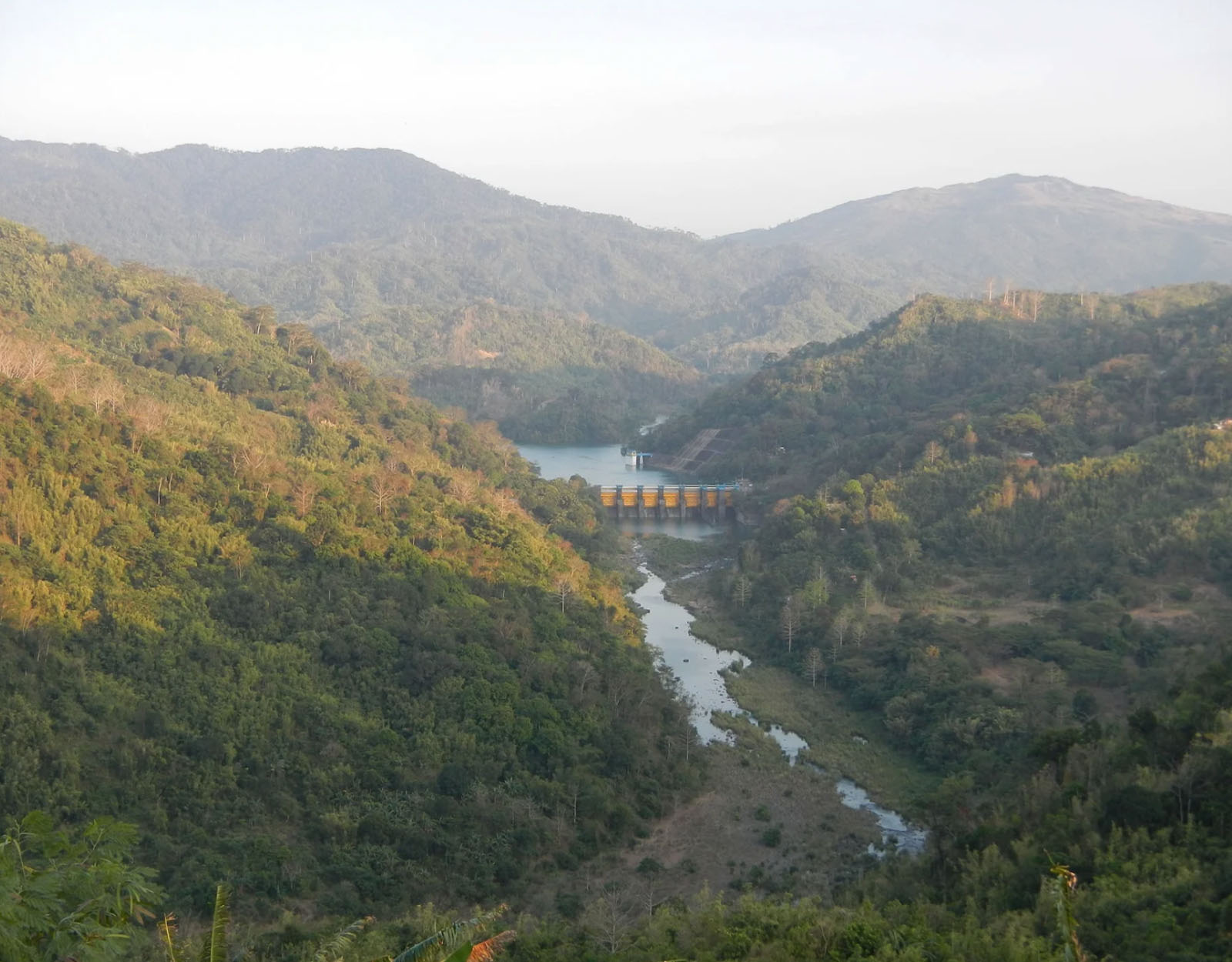
7. Angat Watershed Forest Reserve, Bulacan
If Pampanga is too far of a drive, consider venturing to Bulacan instead. Although considered an industrial and agricultural area, Bulacan retains a lot of its forests including the Angat Watershed Forest Reserve which the DENR has been protecting and managing. The place not only offers a place to forest bathe but also a soulful view of the crystal clear waters of the Angat Watershed.
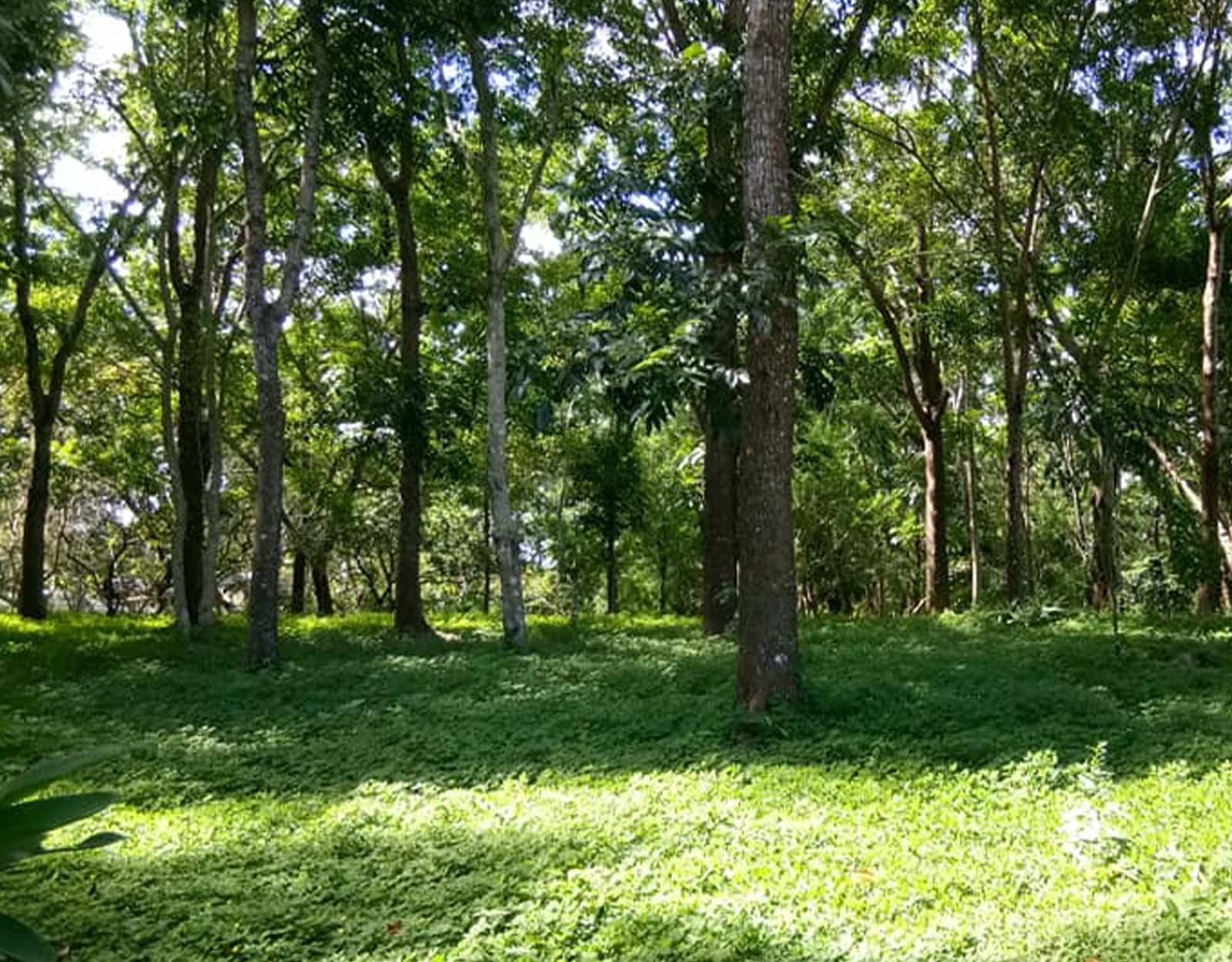
8. Trece Martires Forest Park, Cavite
As one of Cavite’s famous tree-hugging spots, Trece Martires Forest Park developed recreational areas where people can hold events, photoshoots, and even jogging gatherings. Although the place has undergone slight urban developments, there are still various lush spots in the area to tree hug and meditate after a long day of work.
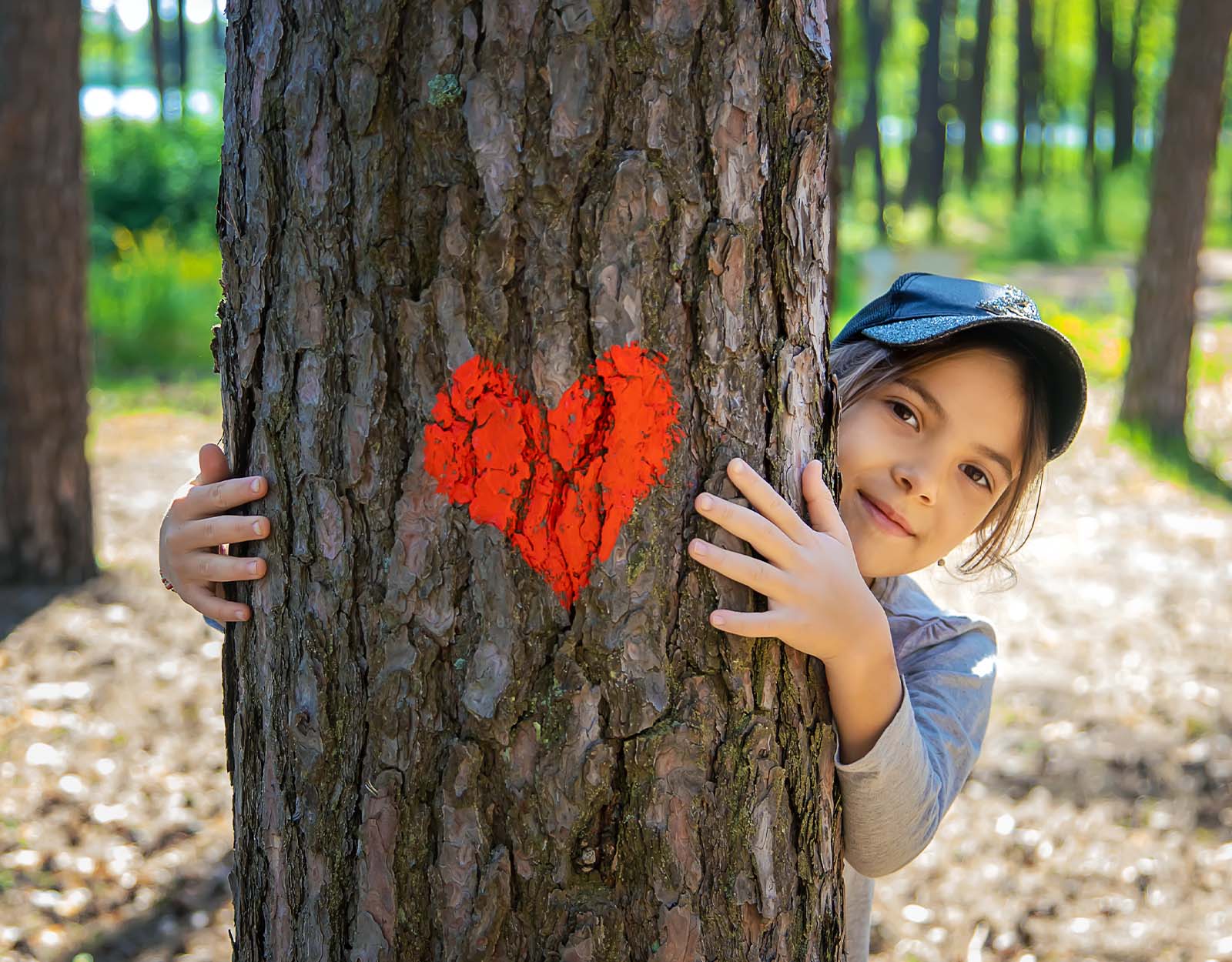
Unfortunately, tree-hugging might become a thing of the past!
Because our population is still growing along with the demand for jobs, some forests have been destroyed to accommodate those places which not only affects the climate but also reduces the number of areas where we can retreat from all the stress. The only way we can make other families see its importance is to continue funding the organizations that have the forests’ best interests at heart. Besides the DENR, there are also various organizations within the provinces like the Haribon Foundation Inc. that fight to protect the trees, even if it means going to court.
Reference
Adriansyah, M. A., Sofia, L., & Prastika, N. D. (2018, April). The Effectiveness of Hugging in Reducing Depression and the Feeling of Powerlessness in the Affected Adolescents. In The International Conference on Public Health Proceeding (Vol. 3, No. 01, pp. 258-258).
Farkic, J., Isailovic, G., & Taylor, S. (2021). Forest bathing as a mindful tourism practice. Annals of Tourism Research Empirical Insights, 2(2), 100028.
Gathright, J., Yamada, Y., & Morita, M. (2008). Tree-assisted therapy: Therapeutic and societal benefits from purpose-specific technical recreational tree-climbing programs. Arboriculture and Urban Forestry, 34(4), 222.
Li, Q. (2010). Effect of forest bathing trips on human immune function. Environmental health and preventive medicine, 15, 9-17.
Simonyi-Gindele, C., Wilson, C., Kuglin, D., Donevan, E., Cole, J., Palmer, J., … & Simonyi-Gindele, V. The Art and Science of Hugging. https://www.onlyyouforever.com/the-art-and-science-of-hugging/
Tsunetsugu, Y., Park, B. J., & Miyazaki, Y. (2010). Trends in research related to “Shinrin-yoku”(taking in the forest atmosphere or forest bathing) in Japan. Environmental health and preventive medicine, 15(1), 27-37.
van Raalte, L. J., & Floyd, K. (2021). Daily hugging predicts lower levels of two proinflammatory cytokines. Western Journal of Communication, 85(4), 487-506.
Walker, K., & Immigration, U. S. (2019). The benefits of hugging go far beyond skin deep; give hugs generously.
Wen, Y., Yan, Q., Pan, Y., Gu, X., & Liu, Y. (2019). Medical empirical research on forest bathing (Shinrin-yoku): A systematic review. Environmental health and preventive medicine, 24(1), 1-21.
More ways to relieve the stress for Mental Health Awareness month?
5 Reasons Why Journaling is a Therapy for the Soul
7 Starter Tips for Aromatherapy at Home: Mom Edition
A Parent’s Easy Guide to Different Kinds Of Therapy









